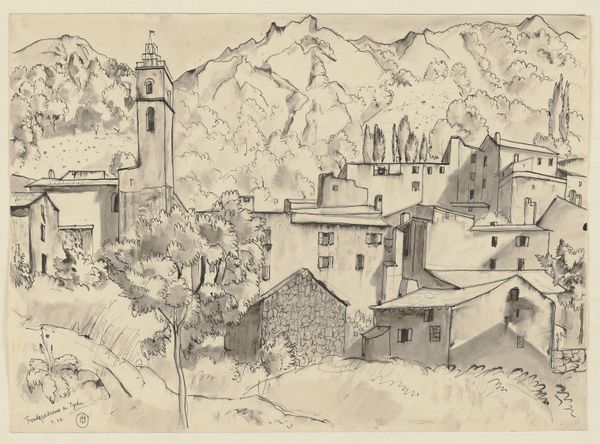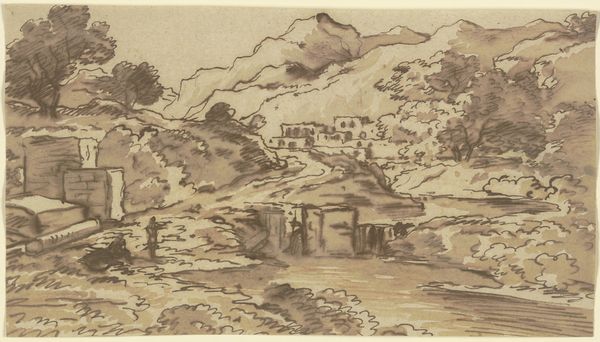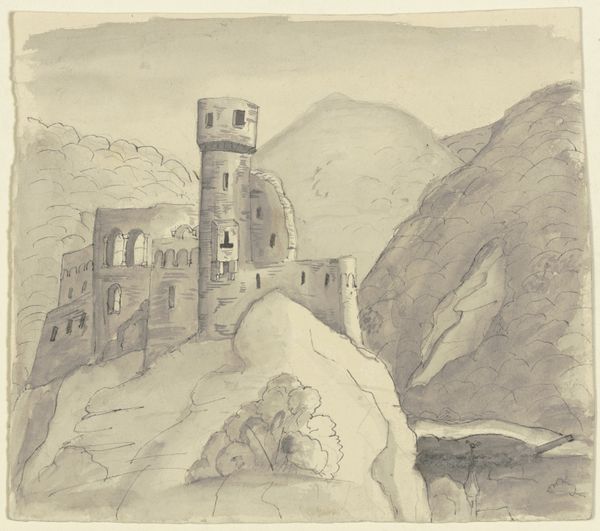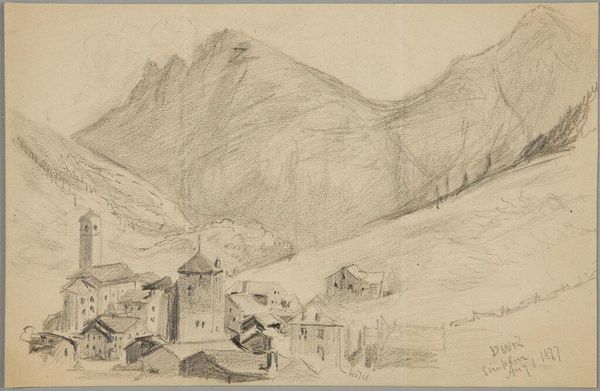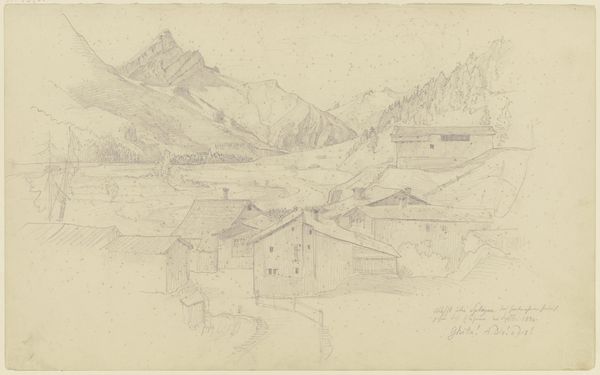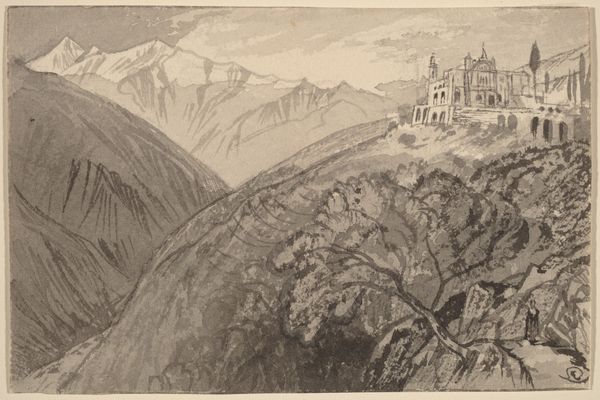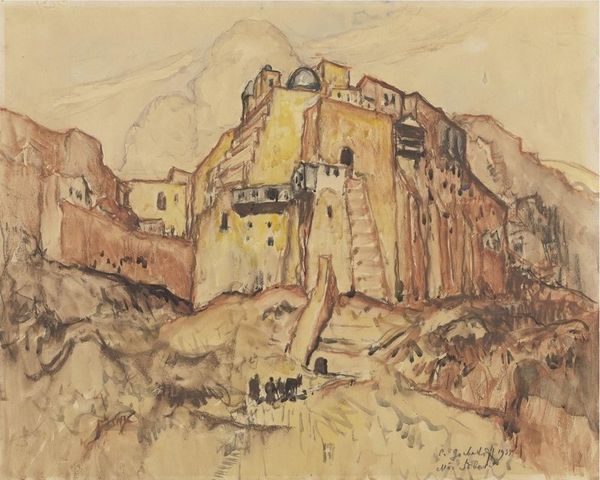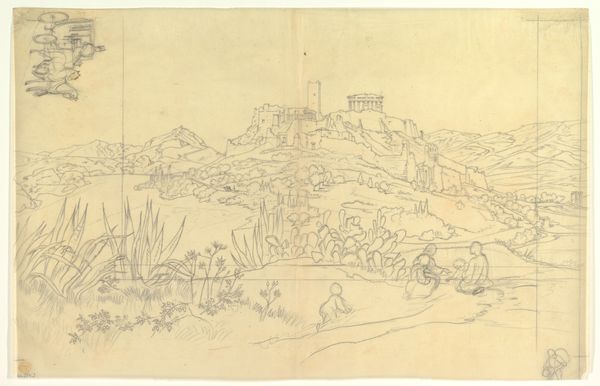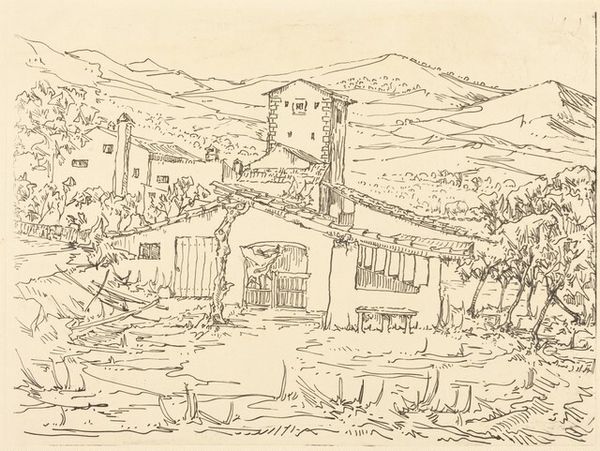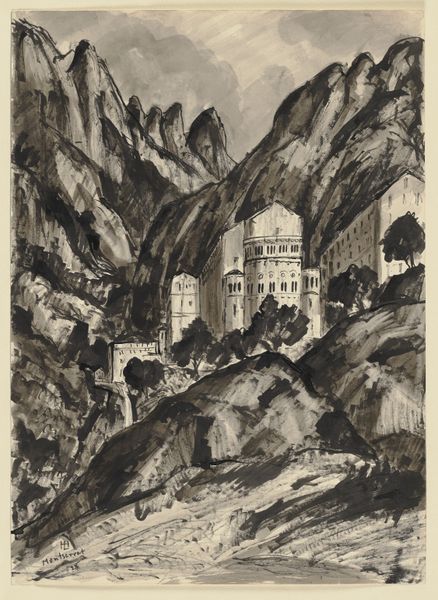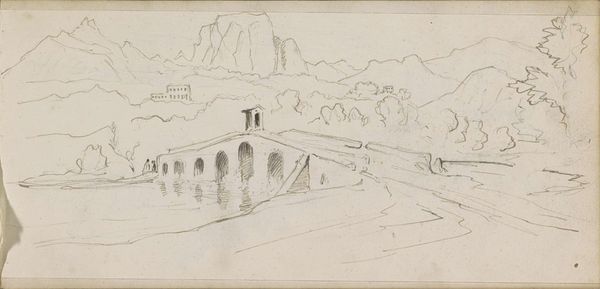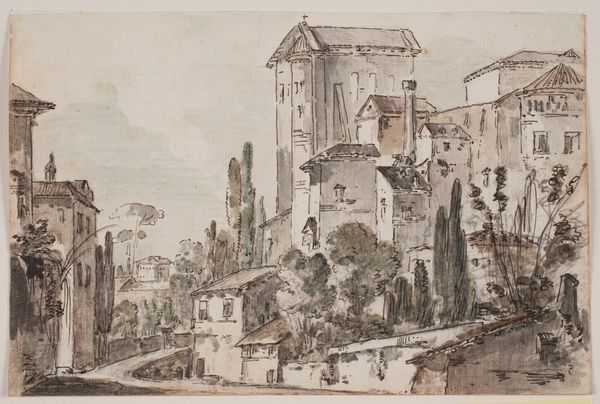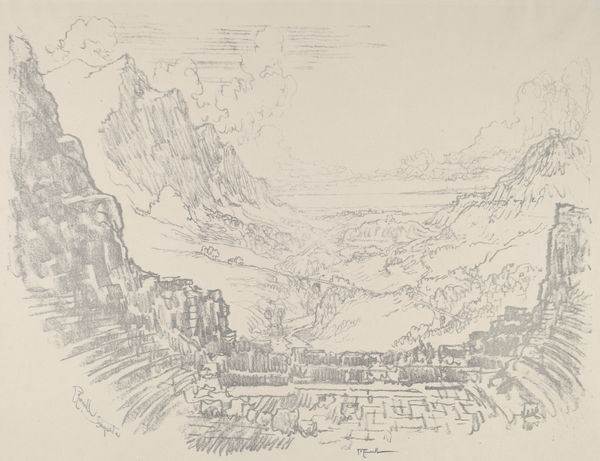
drawing, painting, watercolor
#
drawing
#
painting
#
landscape
#
watercolor
#
expressionism
#
cityscape
Dimensions: overall: 33.8 x 49.4 cm (13 5/16 x 19 7/16 in.)
Copyright: National Gallery of Art: CC0 1.0
Editor: This is Max Pechstein's "Monastery" from 1923, a watercolor and drawing. It’s got a rather sketch-like quality to it. What do you see in this piece beyond just the image of the monastery itself? Curator: Well, look at the materials. Watercolor and drawing—traditionally considered preparatory media. Yet, here they are, the final form. Pechstein's process reveals an interesting point about artistic labour. This isn’t a highly finished oil painting meant for a wealthy patron; it's almost as if he’s capturing a quick impression, a study that becomes the artwork itself. It challenges the value we place on intensive labor versus immediate expression. Editor: I see your point. The fact that it's not oil on canvas affects how we view the artwork, and its accessibility maybe? It feels almost… democratic? Curator: Precisely. Think about who would have consumed this work in 1923. The relative affordability of works on paper made them accessible to a different stratum of society than grand oil paintings. Were these works meant to be widely distributed, challenging the notion of unique art objects, or do the landscapes depicted mirror consumer aspirations? Look, too, at the repetitive nature of the architectural forms. Is he commenting on the social structure that produces these buildings, or perhaps critiquing a rising class? Editor: So you're saying that by looking at what the artwork *is made of* we learn something about the economics and social landscape of art, and maybe of the culture the work represents, not just its aesthetics. That's fascinating! Curator: Exactly. It allows us to ask bigger questions. We must look at the means of production, consumption, and the art market. This tells us a story about artistic value and class distinctions within art itself. Editor: That makes me see the piece very differently now, beyond just a pretty picture. Thanks. Curator: Indeed. Thinking about materiality forces us to reconsider the societal factors intertwined within what we deem “art”.
Comments
No comments
Be the first to comment and join the conversation on the ultimate creative platform.
